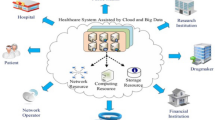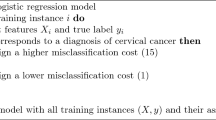Abstract
The rapid technological evolution in the biomedical and molecular oncology fields is providing research laboratories with huge amounts of complex and heterogeneous data. Automated systems are needed to manage and analyze this knowledge, allowing the discovery of new information related to tumors and the improvement of medical treatments. This paper presents the Laboratory Assistant Suite (LAS), a software platform with a modular architecture designed to assist researchers throughout diverse laboratory activities. The LAS supports the management and the integration of heterogeneous biomedical data, and provides graphical tools to build complex analyses on integrated data. Furthermore, the LAS interfaces are designed to ease data collection and management even in hostile environments (e.g., in sterile conditions), so as to improve data quality.





Similar content being viewed by others
References
Bertotti, A., Migliardi, G., Galimi, F. et al., A molecularly annotated platform of patient-derived xenografts (‘xenopatients’) identifies HER2 as an effective therapeutic target in cetuximab-resistant colorectal cancer, Cancer Discovery, 2011.
Clément, S., Fillon, J., Bousquet, J. et al., TreeSNPs: A laboratory information management system (LIMS) dedicated to SNP discovery in trees, Tree Genetics & Genomes 6(3):435–438, 2010.
El Akadi, A., Amine, A., El Ouardighi, A. et al., A two-stage gene selection scheme utilizing MRMR filter and GA wrapper, Knowl. Inf. Syst. 26(3):487–500, 2010.
Gamma, E., Helm, R., Johnson, R. et al., Design patterns, 1. Addison-Wesley Reading, 2002.
Golub, T. R., Slonim, D. K., Tamayo, P. et al., Molecular classification of cancer: class discovery and class prediction by gene expression monitoring, Science 286:5439, 531–537, 1999.
Haquin, S., Oeuillet, E., Pajon, A. et al., Data management in structural genomics: An overview, Methods in Molecular Biology-Clifton then Totowa- 426:49, 2008.
Kuhn, K. et al., The Cancer Biomedical Informatics Grid (caBIG): Infrastructure and Applications for a Worldwide Research Community, Medinfo 2007:1, 330, 2007.
London, J. W., and Chatterjee, D., Using the semantically interoperable biospecimen repository application, caTissue: End user deployment lessons learned, IEEE International Conference on BioInformatics and BioEngineering, 316–317 2010.
Maier, H., Lengger, C., Simic, B. et al., MausDB: An open source application for phenotype data and mouse colony management in large-scale mouse phenotyping projects, BMC Bioinformatics 9:1, 169, 2008.
Tolopko, A.,Sullivan, J., Erickson, S. et al., Screensaver: an open source lab information management system (LIMS) for high throughput screening facilities, BMC Bioinformatics 11:1, 260, 2010.
Wang, J., Li, H., Zhu, Y. et al., VISDA: An open-source caBIG analytical tool for data clustering and beyond, Bioinformatics, 23:15, 2024–2027, 2007
Author information
Authors and Affiliations
Corresponding author
Rights and permissions
About this article
Cite this article
Baralis, E., Bertotti, A., Fiori, A. et al. LAS: A Software Platform to Support Oncological Data Management. J Med Syst 36 (Suppl 1), 81–90 (2012). https://doi.org/10.1007/s10916-012-9891-6
Received:
Accepted:
Published:
Issue Date:
DOI: https://doi.org/10.1007/s10916-012-9891-6




